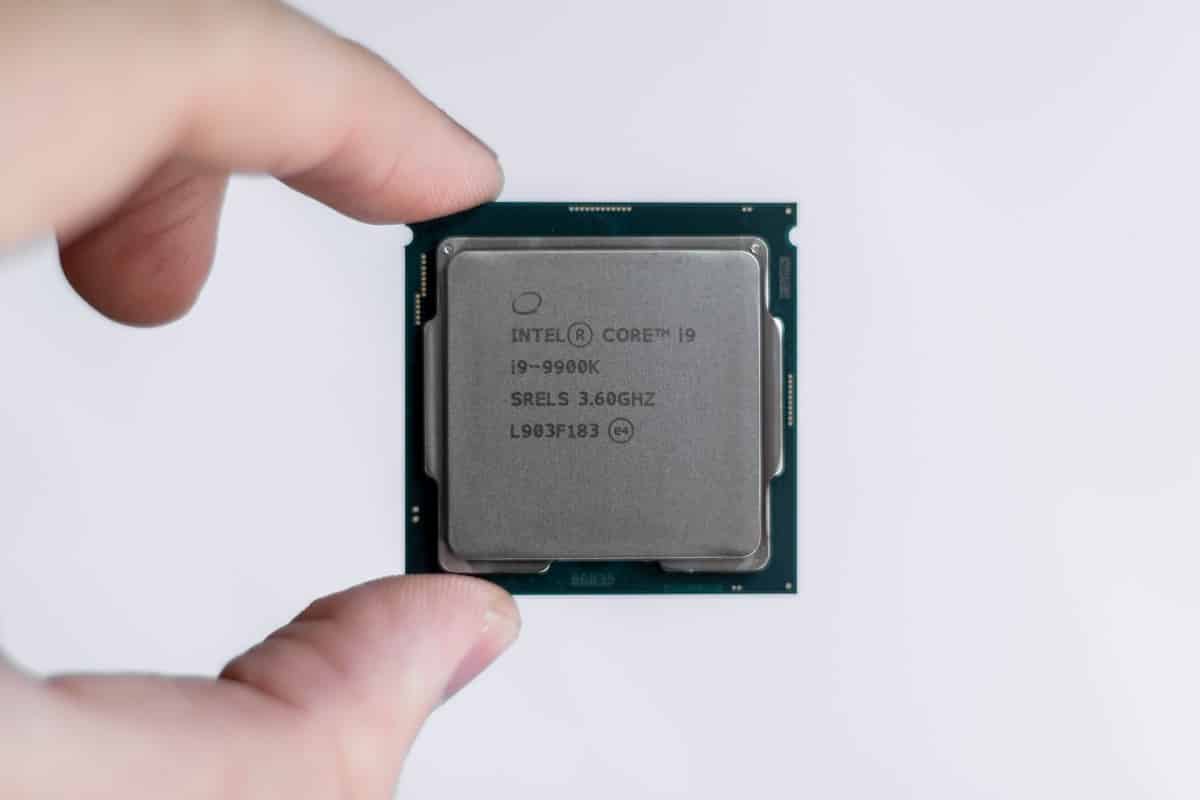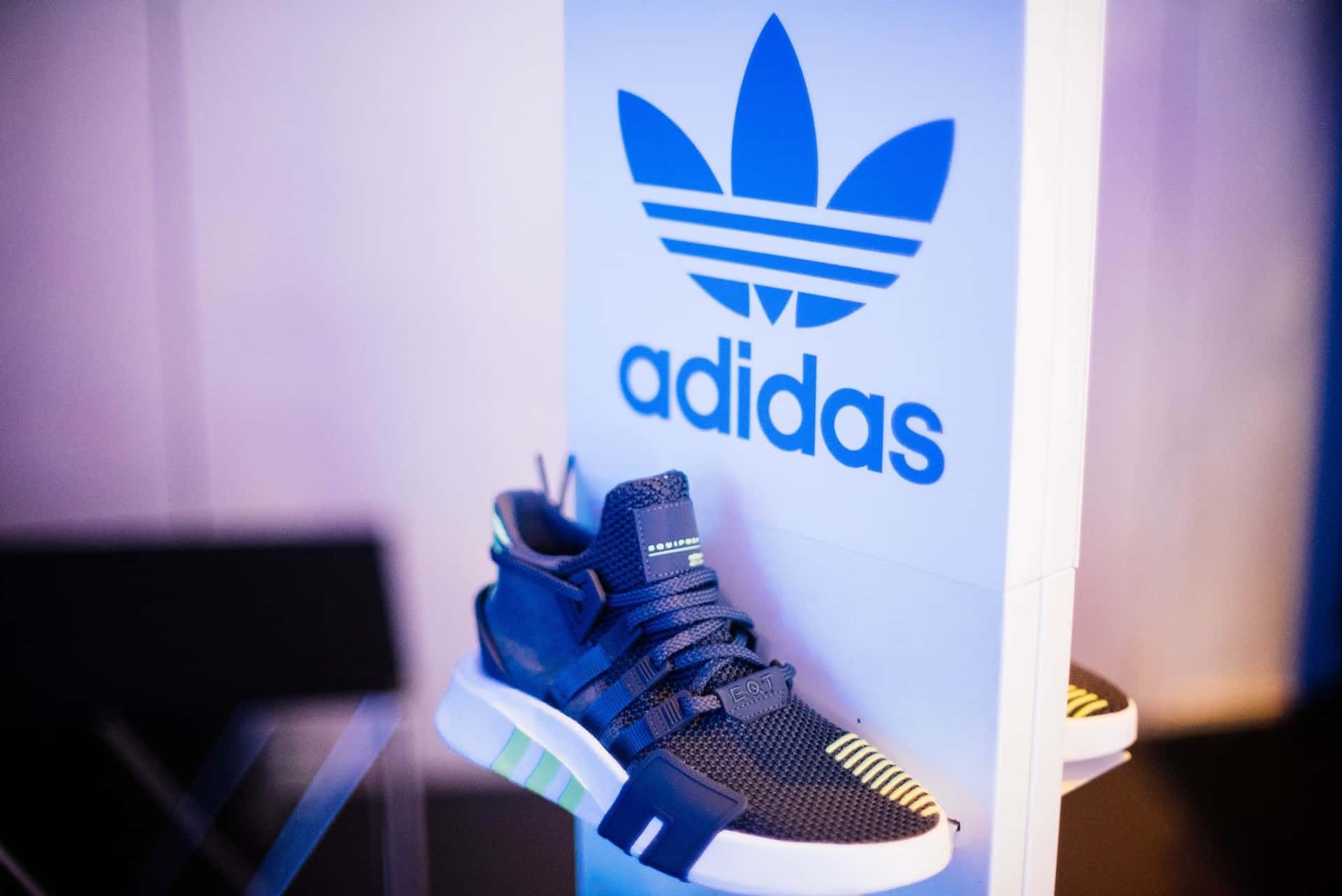Intel is a multinational tech company founded in 1968 by semiconductor pioneers Robert Noyce and Gordon Moore. Based in Santa Clara, California, Intel revolutionized the tech industry with innovative chips and microprocessors. Intel Competitors and Alternatives is the largest semiconductor chip manufacturer globally. Intel’s processors power more PCs than any other alternative on the market.
In 2020, Intel had 110,800 employees and generated $77.9 billion in revenues with a profit of $20.3 billion. Intel is the 30th most valuable company globally, with a valuation of $218.83 billion. According to the Forbes Global 2000 list for 2021, Intel is #36 overall and the 17th most profitable public firm worldwide. [1]
Intel is facing significant competition in the 21st century than at any time in its 53 years history. In Jun 2021, the company split its Data Platform Group into two groups – Datacenter and AI Group. This division has several sub-groups, including accelerated computing systems, graphics, IoT, and advanced tech and software.
In Apr 2021, CEO Gelsinger unveiled Intel’s new IDM 2.0 Hybrid Manufacturing Strategy. This integrated manufacturing plan will rejuvenate Intel’s innovation and guarantee its product leadership. With IDM 2.0, Intel can protect its market from competitors and alternatives like AMD, Qualcomm, ARM, VMware, and Nvidia. [2]
Here is an in-depth analysis of Intel’s competitors and alternatives:
1. Taiwan Semiconductor Manufacturing Co. (TSMC)
Year founded: 1987
Headquarter: Hsinchu, Taiwan
TSMC is the world’s largest semiconductor foundry. The company manufactures chips using 3-nanometer tech, making it the go-to producer for advanced semiconductors. In 2020, TSMC’s revenue increased 25.2% to $47.78 billion. TSMC generates more than double Intel’s revenue, but it has 56,831 employees – about half of Intel’s workforce.
In 2020, TSMC’s chip business accounted for 54% of total foundry revenue globally. The chip giant will spend a record $28 billion in 2021 alone to increase its capacity and leadership of the sector.
TSMC is building a $12-billion chip plant in Arizona scheduled to open in 2024. With this facility, TSMC will go head-to-head with Intel on American soil. Intel competitors like AMD, Qualcomm, and Nvidia rely on TSMC for production. TSMC is Intel’s top competitor and alternative in the chipmaking industry. [3]
2. Advanced Micro Devices, Inc. (AMD)
Year founded: 1969
Headquarter: Santa Clara, California
AMD is a global tech company specializing in semiconductors used in integrated circuits for PCs. In 2020, AMD’s revenues surged 45%, from $6.73 billion in 2019 to $9.76 billion. The company saw a 630% increase in profits to $2.49 billion in 2020, with a whopping 948% jump in Q4. AMD has around 10,000 employees, about a tenth of Intel’s workforce. [4]
Like Intel, AMD also develops flash memories, motherboard chips, and graphics processors. Its processors are used in gaming consoles, PCs, CPUs, and devices for manufacturing and telecom. Intel has increased the gap in the x86 CPUs market for two consecutive quarters. Intel’s market share in Jan 2021 was 66.51%, versus 33.49% for AMD.
By Jun 2021, Intel had gained 5% to 71.58% at the expense of AMD. But AMD still powers 28% of gaming consoles. It is the world’s second microprocessor manufacturer with 20.5% of the market. AMD is Intel’s top competitor and alternative. [5]
3. Nvidia
Year founded: 1993
Headquarter: Santa Clara, California
Nvidia is a multinational tech company that designs graphics processing units and chips for mobile computing, gaming consoles, autos, and other markets. It also develops GPU processors for 3D graphics, virtual reality, and AI-powered devices.
For FY2021, Nvidia’s revenue increased by 53%, from $10.92 in FY2020 to a record $16.68 billion. The company has around 18,100 employees and operates globally.
Nvidia is in the process of acquiring ARM from Softbank for $40 billion. Cambridge-based ARM is a leading semiconductor licensor and one of Intel’s top competitors. The acquisition was expected to close by Mar 2022, but the deal is in jeopardy due to ARM’s unique role in the market.
Most of Nvidia’s competitors like Qualcomm, Microsoft, Google, and Huawei use ARM’s semiconductor blueprints to manufacture their chips. They filed a complaint arguing that Nvidia can make it harder for them to access ARM’s technology. If Nvidia acquires ARM, it will overtake AMD to become Intel’s #2 competitor. [6]
4. Samsung
Year founded: 1983
Headquarter: Seoul, South Korea
Samsung is the world’s largest memory chip and smartphone maker with over 300,000 employees. The company controls about 5% of the microprocessor market and competes with Intel. In 2020, Samsung’s revenue was $197.69 billion.
The main competitive advantage for Samsung over Intel is its immense financial capability. The company will spend more than $10 billion to build an advanced logic chipmaking plant in Austin, Texas. Construction will commence in the second half of 2021, with plans to install manufacturing tools from 2022 and begin operations in 2023.
Over the next ten years, Samsung will invest $116 billion in its chip design business. Samsung can leverage its vast financial resources to grab Intel’s market share and become the dominant player in the chip industry. [7]
5. Qualcomm
Year founded: 1985
Headquarter: San Diego, California
Qualcomm is the world’s leading developer of mobile phone chips and 5G technologies. Its chips connect mobile phones, broadband devices, and networking equipment to wireless data networks. The company’s integrated circuits and software power most consumer electronics in the Android market.
In 2020, Qualcomm had over 41,000 employees and generated $23.53 billion in revenues.
The main competitive advantage for Qualcomm over Intel is its leadership of the 5G technology market. About 450-550 million 5G handsets will be sold globally in 2021, increasing Qualcomm’s addressable market.
The company expects annual sales of 5G chips to hit $10 billion in 2021, up from $6 billion generated in 2020. Qualcomm’s leadership in the chip market makes it a worthy Intel competitor. It is the best Intel alternative for 5G mobile chips. [8]
6. Advanced RISC Machine (ARM)
Year founded: 1983
Headquarter: Cambridge, UK
ARM is a leading chip technology company, with 8611 employees in 37 locations globally. The company manufactures processors and has nearly 1,800 licensees for its chip designs. In the first half of 2020, ARM saw a 22% increase in sales to $992 million. The company generates over $1.5 billion in revenues annually.
In 2016, SoftBank acquired ARM for $31.4 billion, and its ownership is changing again in 2021. Nvidia is buying ARM from Softbank for $40 billion – $12 billion in cash, $21.5 billion in stock, and $5 billion in cash/stock.
This acquisition increases ARM’s competitive edge. But ARM is a formidable Intel rival in its own right. Currently, ARM-based chips power around 70% of the world’s autos, data centers, and consumer electronics. ARM is a worthy Intel competitor. [9]
7. Broadcom
Year founded: 1961
Headquarter: San José, California
Broadcom is one of the fastest-growing chipmakers for 5G-enabled phones. It develops semiconductors, controllers, and processors. In 2020, Broadcom’s revenues surged by 5.71%, from $22.6 billion in 2019 to $23.89 billion.
The main competitive advantage for Broadcom is its long-lasting supplier relationship with Apple and Samsung. Broadcom can exploit the ever-growing 5G market more than other Intel competitors.
Broadcom struck an agreement with Apple for the iPhone maker to buy $15 billion worth of smartphone chips from 2021 to 2023. The company also makes chips for Nokia’s 5G base stations, giving it access to the 5G infrastructure market. All these lucrative revenue streams increase Broadcom’s competitive advantage over Intel. [10]
8. Microchip Technology
Year founded: 1989
Headquarter: Chandler, Arizona
Microchip Tech is one of the leading manufacturers of microcontrollers, semiconductors, and integrated circuits. The company has 18,300 employees. For fiscal 2021, Microchip’s revenue increased by 2% to $5.44 billion.
The company serves around 120,000 customers from different sectors. Its positioning guarantees stable income. Since 2018, Microchip has been generating over $5.2 billion in revenues. Microchip is one of the best Intel alternatives for industrial manufacturers. [11]
9. Maxim Integrated
Year founded: 1983
Headquarter: San José, California
Maxim Integrated is an engineering company that develops semiconductors and designs analog and mixed-signal integrated circuits. Its products cater to automotive, communications, consumer, healthcare, and industrial markets. For the fiscal year 2021, Maxim’s revenue was $2.63 billion. The company has around 7,000 employees and operates globally.
Since 2018, Maxim’s revenues declined from $2.48 billion to $2.31 billion in 2019 to $2.19 billion in 2020. The company is now exploiting an increase in demand for semiconductors across all markets.
Its revenue increased in FY2021 for the first time in the last four years. Maxim Integrated is set to merge with Analog Devices by the end of 2021, which will increase its competitive edge over Intel. [12]
10. NXP
Year founded: 1953
Headquarter: Eindhoven, Netherlands
NXP is one of the leading chip suppliers for the automotive industry. It is a subsidiary of Philips and operates as its parent company’s semiconductor division. NXP also develops semiconductors for other sectors but generates most of its revenues from auto. In 2020, NXP had 29,000 employees with over $8 billion net sales.
The ever-increasing demand for cars globally expands NXP’s addressable market and increases its competitive edge. In Aug 2021, NXP’s quarterly earnings surged by 43% year-over-year to $2.6 billion. The Dutch company projects that high demand will boost revenue growth for the remainder of 2021 and into 2022. NXP’s long-standing connections with automakers make it one of the top competitors for Intel in the automotive business. [13]
11. Marvell Technology Group
Year founded: 1995
Headquarter: Wilmington, Delaware
Marvell is a semiconductor designer specializing in data processing units. Its chips coordinate the flow of information in data centers and mobile network infrastructure. For fiscal 2021, Marvell’s revenue was $2.97 billion, up from $2.7 billion for FY2020.
Marvell partnered with telecom carriers to deploy 5G networks and struck a deal with Nokia to develop 5G radio technology. The company created a chip platform that caters to Samsung and other telecom giants.
In Apr 2021, Marvell acquired Inphi to expand its DPU lineup with robust circuitry for high-speed data transfer. All these factors and advancements contributed to Marvell’s 20% increase in revenue in the first half of 2021. Marvell is now perfectly positioned to challenge Intel for more market share. [14]
12. SK Hynix Inc.
Year founded: 1983
Headquarter: Incheon, South Korea
SK Hynix is one of the leading chipmakers. The company’s top-selling products include the 128-layer NAND Flash and 1Z nanometer DRAM chips, which compete with Intel’s offerings. In 2020, SK Hynix’s revenue increased by 18% to $30 billion and more than doubled its net profit to $4.25 billion.
The chipmaker’s market share of server DRAMs increased in 2020, and sales of its SSD for data centers grew six-fold. In the NAND business, SK Hynix benefited from an increase in demand for smartphone chips.
The company is adopting ultraviolet lithography, a state-of-the-art chipmaking technology for mass production of 1a-class DRAM chips with 15-nanometer circuits. Projections for 2022 indicate that SK Hynix’s DRAM shipments will increase by 20% and a 30% surge for its NAND flash. SK Hynix’s fast-growing earnings make it a worthy Intel competitor. [15]
13. Micron Technology
Year founded: 1978
Headquarter: Boise, Idaho
Micron is one of the leading memory chip makers globally. It makes DRAM, NAND Flash, and NOR Flash memory. For over 40 years, Micron’s memory chips have delivered optimal memory and storage systems for consumer and industrial applications.
In 2020, Micron’s annual revenue was $21.435 billion. The company benefited from the high demand for memory chips in 2021, which increased its quarterly revenues by 30%. For comparison, Micron has a compound annual rate of 9.7% from 2010 to 2020.
Its revenue growth in the first half of 2021 is higher than the last ten years. Micron Technology is one of the best Intel alternatives for DRAM chips. [16]
14. Applied Materials
Year founded: 1967
Headquarter: Santa Clara, California
Applied Materials is an engineering company that provides hardware and software for developing semiconductor chips. Most Intel competitors use its chipmaking equipment, services, and software. Applied Materials has around 24,000 employees and generates more than $17 billion annually.
Applied Materials’ engineering solutions are used to produce chips and displays for solar systems, PCs, TVs, and smartphones. But the company has diversified beyond hardware and software into chipmaking through acquisitions.
Applied Materials has spent more than $7.67 billion to acquire 11 chipmakers, including Varian Semiconductor for $4.90 billion and Etec for $1.77 billion. In 2020, it bought Perceptive Engineering for an undisclosed amount. With these acquisitions, Applied Materials now offers alternatives to Intel’s semiconductor chips. [17]
15. Texas Instruments Inc.
Year founded: 1951
Headquarter: Dallas, Texas
Texas Instruments is a semiconductor company that operates globally. It designs, manufactures, tests, and sells analog and embedded processing chips. For full-year 2020, it generated $14.46 billion, up from $14.38 billion earned in 2019.
Like Intel, Texas Instruments’ semiconductor chips cater to different sectors. The company has clients in automotive, industrial, personal electronics, communications, and other industries. Texas Instruments offers cheaper alternatives to Intel’s semiconductor chips. [18]
References & more information
- Murphy, A. (2021, May 13). Global 2000. Forbes
- Martin, D. (2021, Jul 23). The 10 Biggest Intel News Stories Of 2021. CRN
- Lee, Y. (2021, Mar 15). How much the world depends on Taiwan for semiconductors. CNBC
- Ikoba, J. (2021, Jan 27). AMD recorded an almost 1000% jump in profit in Q4 2020. Gizmo China
- Lilly, P. (2021, Jul 6). Intel erased all the market share gains AMD CPUs made this year. PC Gamer
- Shead, S. (2021, Aug 4). Why Nvidia’s $40 billion bid for Arm could be in jeopardy. CNBC
- Kim, S. (2021, Jan 22). Samsung Considers $10 Billion Texas Chipmaking Plant. Bloomberg
- Nellis, S. (2021, Jul 29). Qualcomm optimistic on 5G, connected device sales as supply bottlenecks ease. Reuters
- Rossolillo, N. (2021, Feb 4). The Long-Term Potential for NVIDIA and ARM Is Likely Being Undervalued. The Motley Fool
- Chauhan, H. (2021, Aug 3). Better Buy: Marvell Technology Group vs. Broadcom. The Motley Fool
- Great Speculations (2021, Jul 8). Growing Margins Could Help Microchip Technology Stock Regain Early-2021 Highs. Forbes
- Great Speculations (2021, Jul 6). Maxim Integrated Products Stock Could Lose 15% Despite Demand Revival. Forbes
- Thomson, A. (2021, Aug 2). NXP Projects Revenue That Would Top Estimates on Robust Demand. Bloomberg
- Rossolillo, N. (2021, Jul 14). Why Marvell Technology Group Stock Jumped 23% in the First Half of 2021. The Motley Fool
- Song, H. (2021, Jan 29). SK Hynix’s 2020 net profit exceeds expectations, growing twofold on year. Korea Daily
- Cohan, P. (2021, May 11). Micron’s revenue is expected to grow 30.5%. Forbes
- Tracxn Team (2021, Aug 4). Overview of Applied Materials’ Acquisitions. Tracxn
- Texas Instruments (2021, Jan 26). TI reports Q4 2020 and 2020 financial results and shareholder returns. PR Newswire
- Featured Image by Christian Wiediger












Add comment